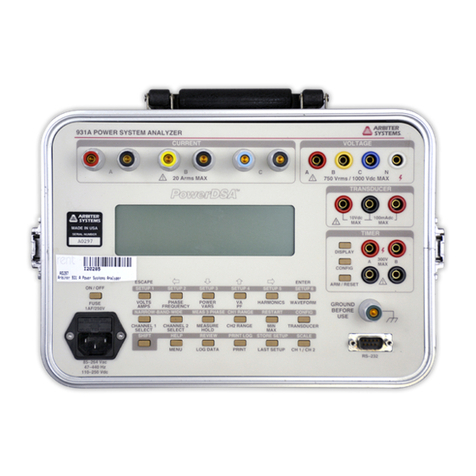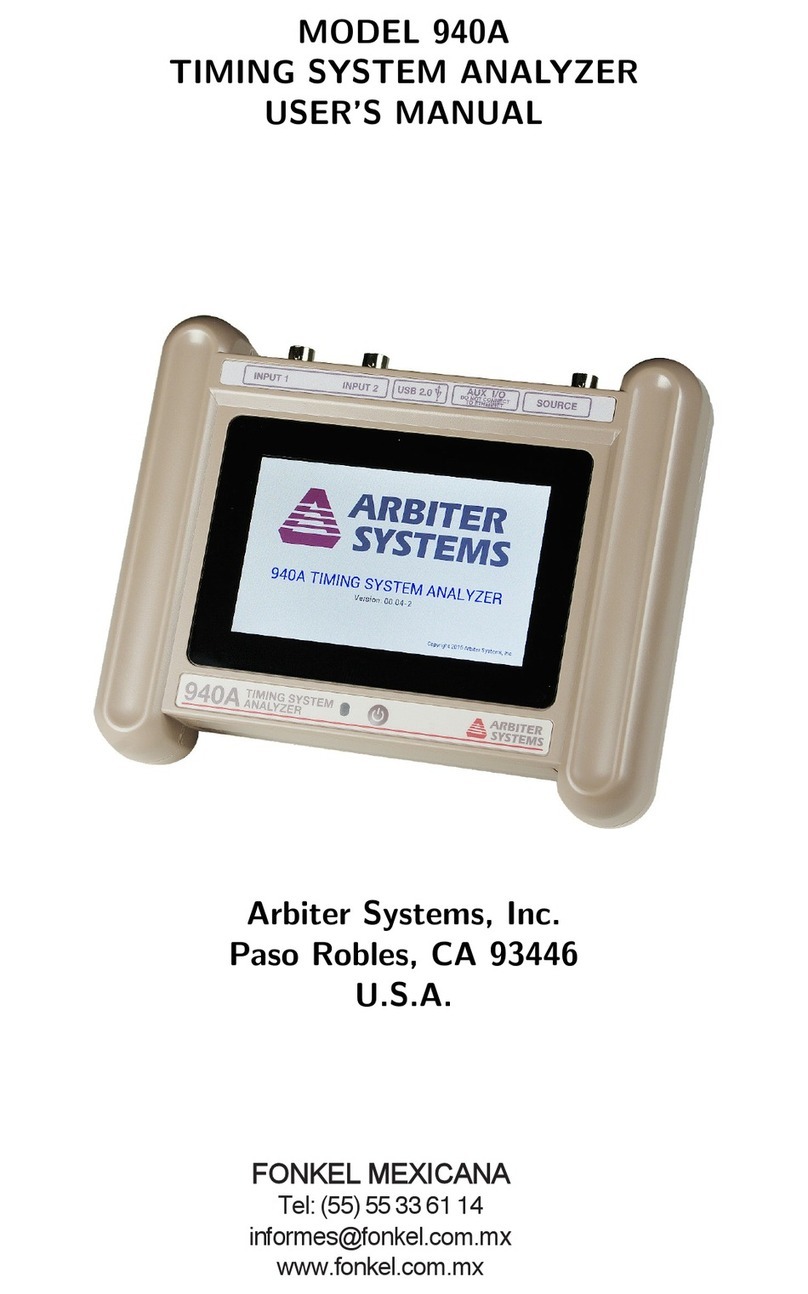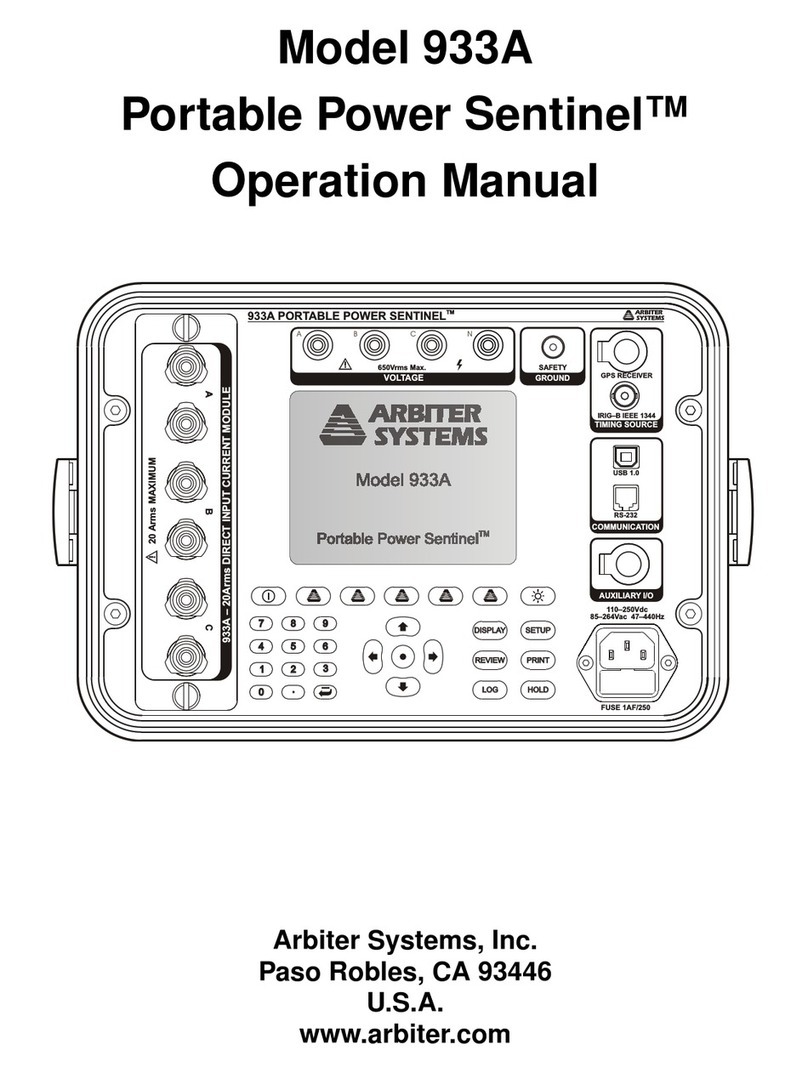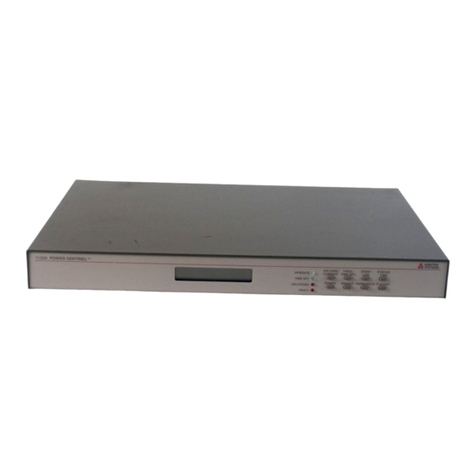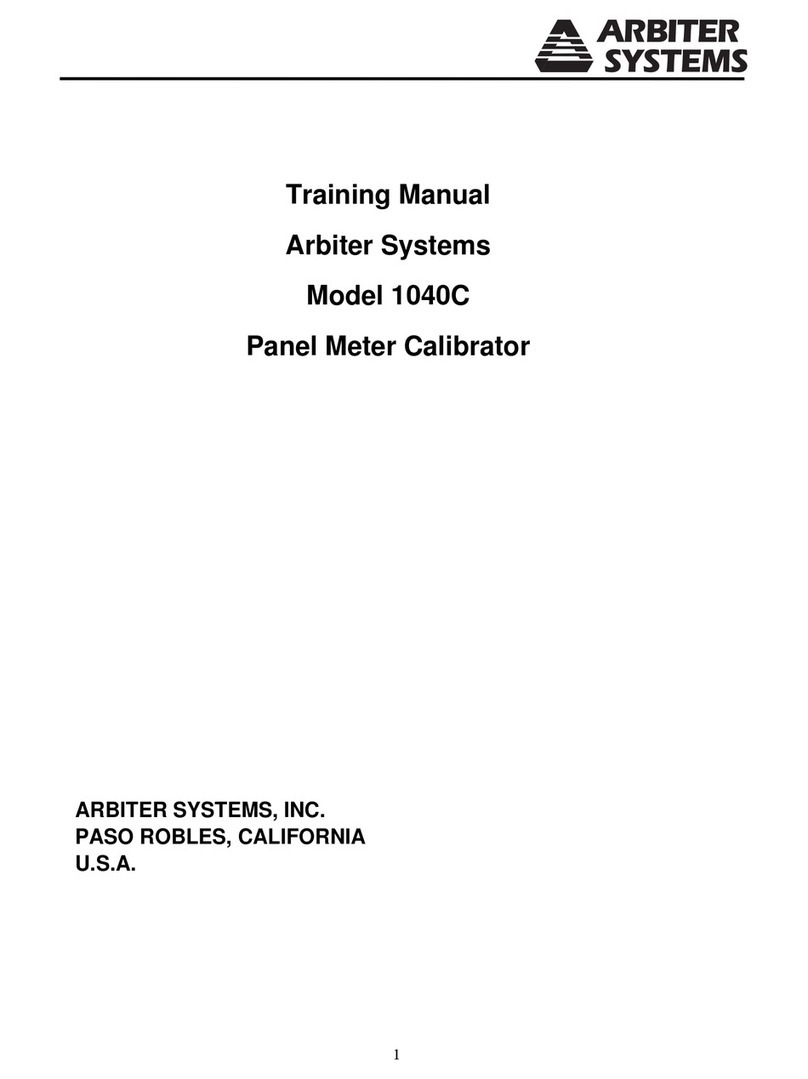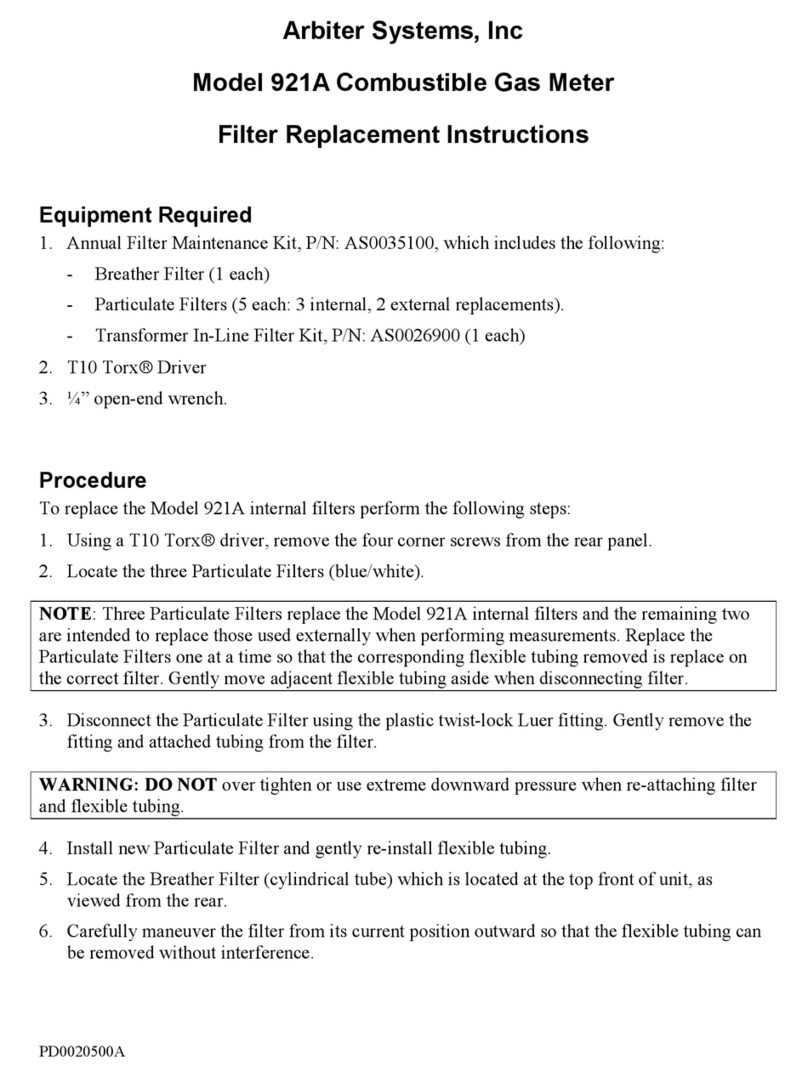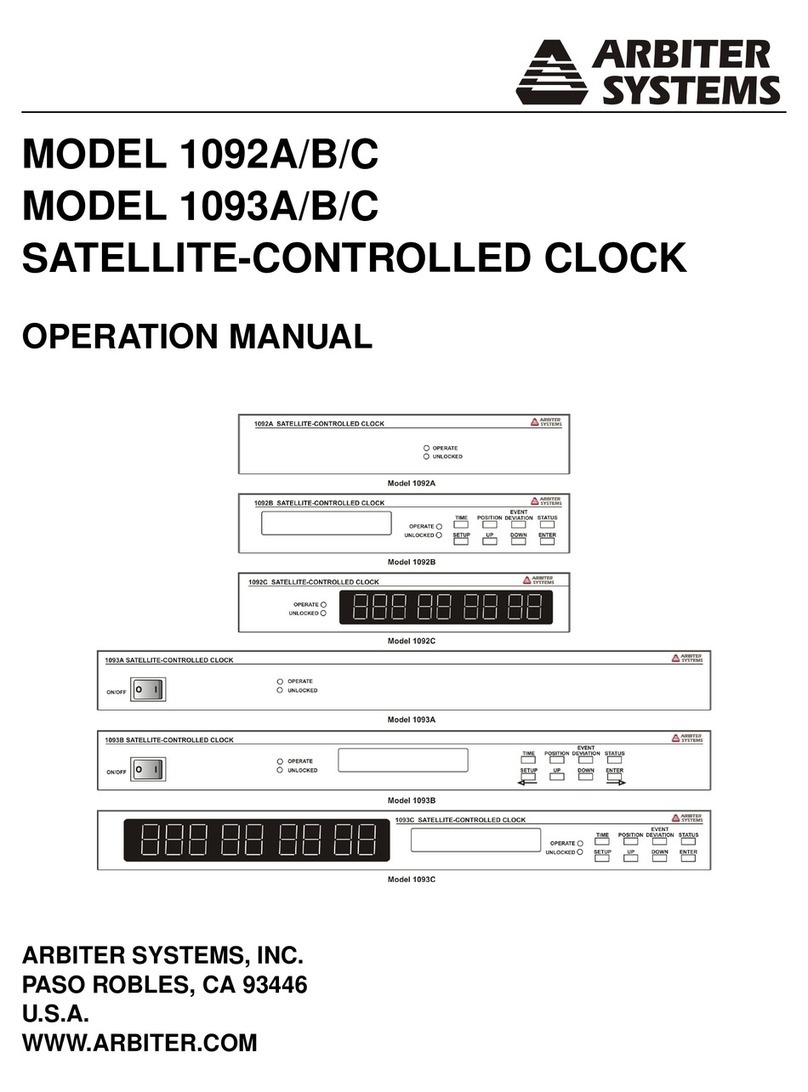
APPLICATION NOTE 113
Arbiter Systems, Inc. 1324 Vendels Circle, Suite 121 Paso Robles, CA 93446 3
Additionally, the same meter that reads the
reference current also measures the probe
current, reducing equipment and other
calibration errors.
Since the Model 931A/930A/929A measures
true RMS values to 0.05% (3 kHz bandwidth),
any source of current may be used for
reference. It is important to make Channel A
the direct reference channel, and make Channel
B or C the channel to be calibrated (using the
current probe).
Calibrating the Power Analyzer
Set up the power analyzer as follows:
1. Switch on the power to the unit and wait for
it to show both channels.
2. Press the Channel 1 Select key and use the
cursor movement keys to select Channel 1
as Ia.
3. Press the Channel 2 Select key and use the
cursor movement keys to select Channel 2
as Ib.
4. Set the SCALE for Ib to the nominal CT
ratio (e.g. 100.00, see example 1).
5. Connect the direct current source to current
input A (Channel 1) and the current probe
leads to current input B (Channel 2).
6. Use a current amplitude near the value to be
measured. Make certain that the current
source to the Power Analyzer is less than
20 Amps.
7. Clamp the current probe over one of the
leads of current input A leads
8. If the current source is ON, then the CH1
and CH2 on the power analyzer should be
indicating two measurements very close in
value.
9. Press the CH1 / CH2 key and the analyzer
will mathematically compare Channel 2 to
Channel 1, and provide the exact magnitude
and phase values to program in to the
power analyzer.
10. Press the SHIFT and SCALE keys to view
the various scale values. Use the cursor
keys to move to Ib and press ENTER.
11. Use the cursor keys again to select the
correct digit and numerical scale value for
magnitude. When the value is correct –
with decimal point – press ENTER.
12. Repeat the procedure in 8 and 9 for phase
difference (between A and B).
The probe should now be calibrated to the
power analyzer, read current directly and
compensate for errors in magnitude and phase
shift. Three examples follow.
Calibrated Example 1
PROBE: AEMC Model MN170, Clamp-on Current
Probe, 100:1 ratio and maximum input current of 75
Amps
Using a Model 1040C as a current source, a
Model 931A to measure current, calibration
was performed at 5 Amps. Measurements at
other values were as follows:
1040C CH A CH B CH1/CH2 φ°
0.1 0.1000 0.1000 1.0004 0.21
1.0 1.0007 1.0014 0.9994 0.18
2.0 2.0003 2.0012 0.9995 0.13
3.0 3.0000 3.0008 0.9997 0.08
4.0 4.0004 4.0010 0.9999 0.04
5.0 5.0019 5.0020 1.0000 0.00
From left to right, the first three rows are in
amps. The fourth row is dimensionless (A/A),
and the last row is the phase difference in
degrees between the two measurement channels
(Channel 2 compared to 1).
